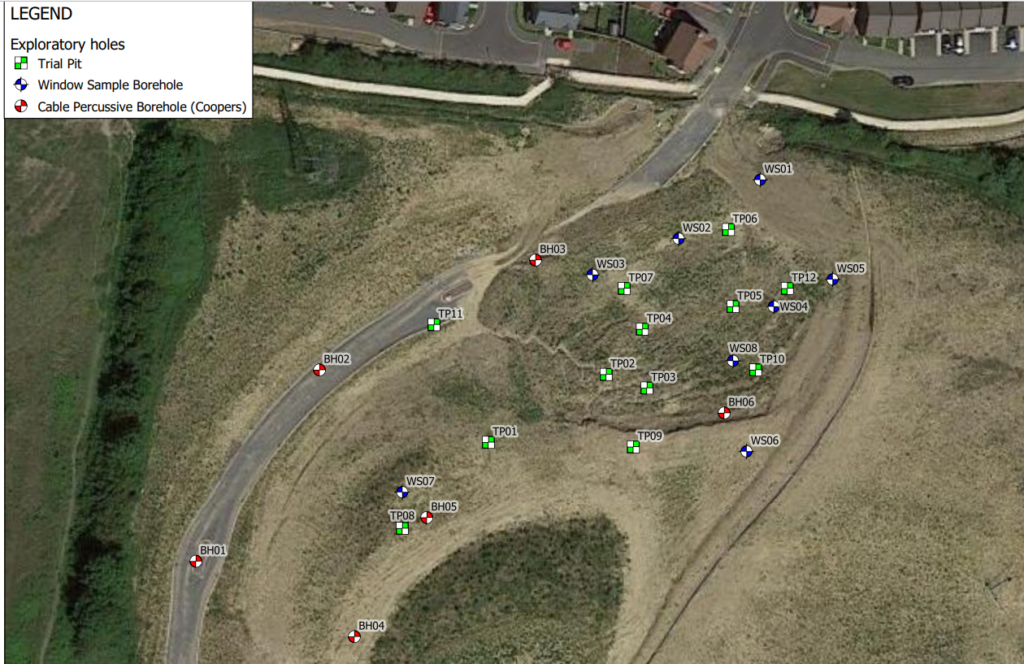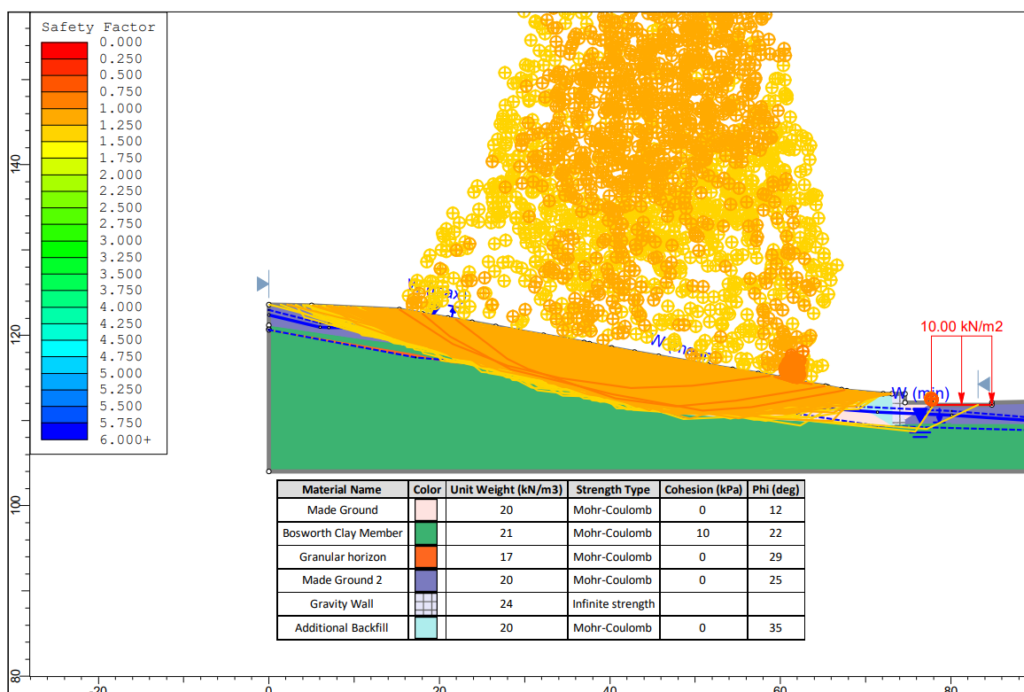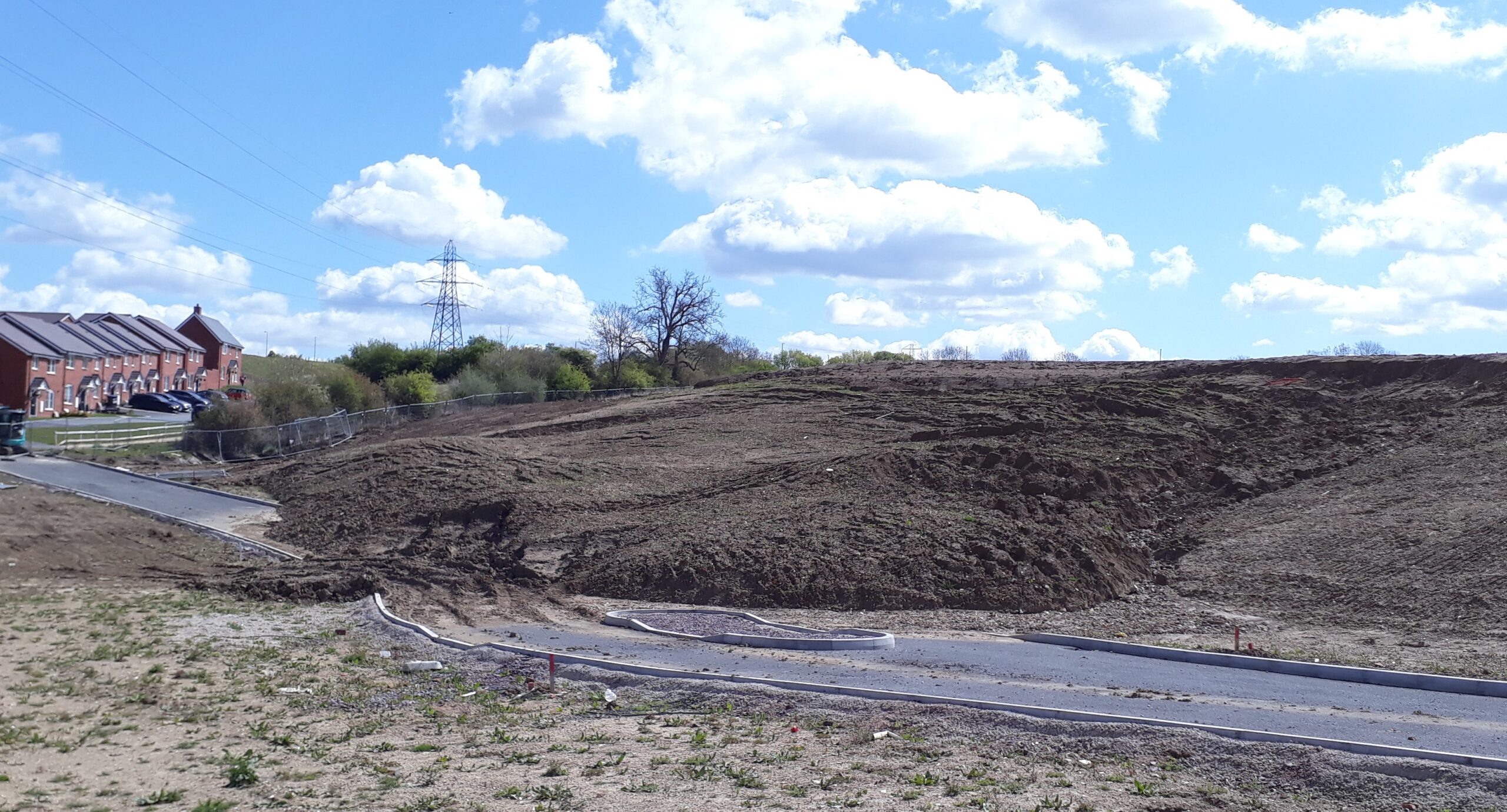The teams at GRM have developed an excellent reputation for supporting landowners and developers at all stages of their development projects. This includes projects were everything goes according to plan and also those occasions where specialist skills are required to resolve an unforeseen problem.
In one recent example, GRM was engaged by a national housebuilder to investigate the cause of the landslip which had spilled over onto the main spine road through a residential development. Approximately 18,000m3 of material was affected covering a slip area of 3500m2.
In addition to investigating the cause, the client also requested a range of potential and costed solutions which would ensure slope stability and prevent further landslips. A quick turn around was required to allow the main road to be approved by the local authority and the residential build to continue as planned.
Data was already available from initial ground investigation studies across the development site, but additional work was required to identify specific parameters related to this area of land and the cause of the soil movement. This involved numerous trial pits and window sample holes across and around the area of the landslip. We also started routine groundwater monitoring to establish the extent and role it might have played in ground instability.

Subsequent laboratory testing of soil samples allowed us to produce an engineering feasibility report. From this we would be able to provide the client with several solutions they could present to the local authority to satisfy their requirement that the road wouldn’t be subject to slope stability issues in the future.
Our geotechnical and engineering teams used commercially available slope stability software to ascertain an understanding of the likely controlling factors behind the slip profile. From this we were able to output the likely factors of safety associated with each engineering solution. The three potential solutions were:
- Construction of a retaining wall
- Mass replacement of material with granular fill
- Treatment of in-situ material using deep soil mixing and a cementitious binder.

The latter provided the greatest level of improvement whilst minimising the amount of material importation and exportation (something that is increasingly important both in terms of cost and environmental impact). This option was also supported by site specific testing and laboratory trials to understand the likely long-term characteristics of the improved soils.
The wide range of experience and expertise across the GRM teams meant that we were able to manage all phases of the project in-house. This facilitated a single point of contact for the client, saving time and money and miscommunication. The client was impressed with our final report and recommended solution, and we have since been involved with slope stabilisation work in other areas of the development site.
Further information on this project and the services GRM used is detailed in a Case Study PDF available here:
GRM-Slope-Stability-Case-Study-1.0.pdf
If you have any development or construction projects, then please get in touch to find out how we can help save both time and costs. Please use your main point of contact at GRM or for new enquiries email richard.upton@grm-uk.com or call 01283 551249.


